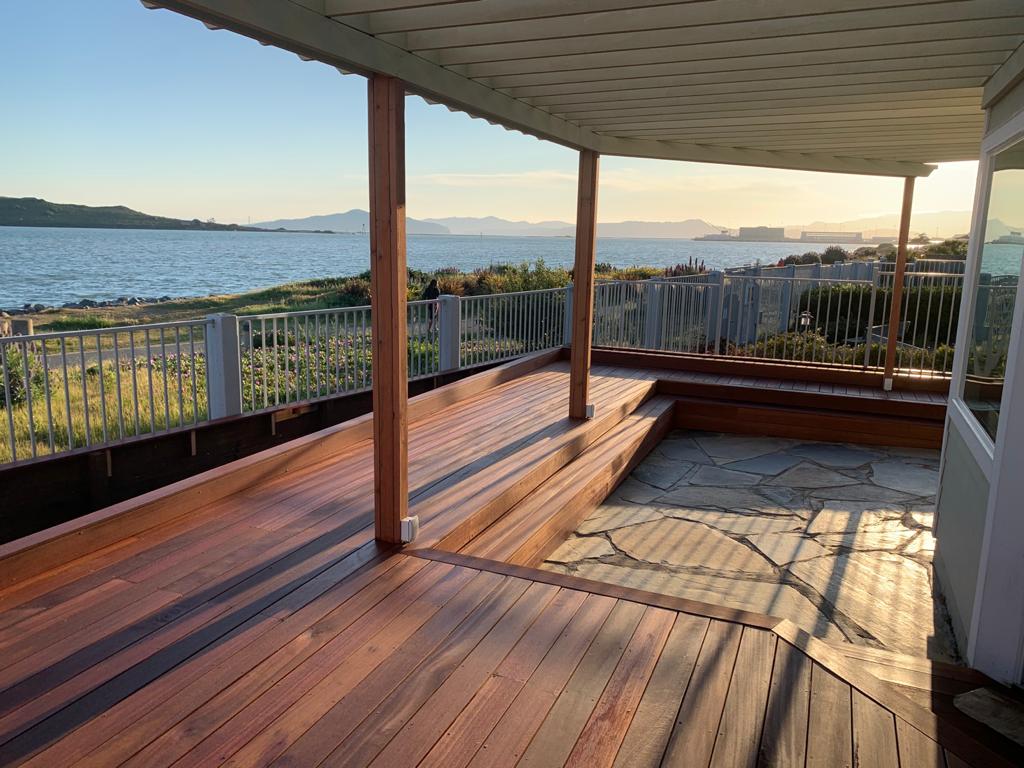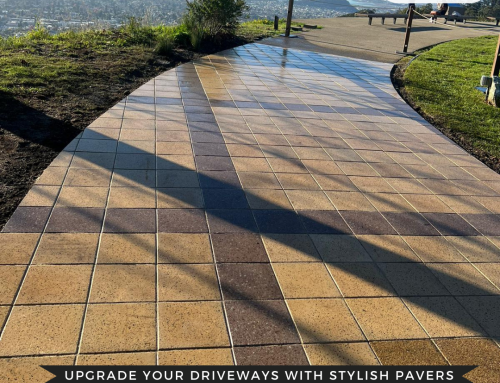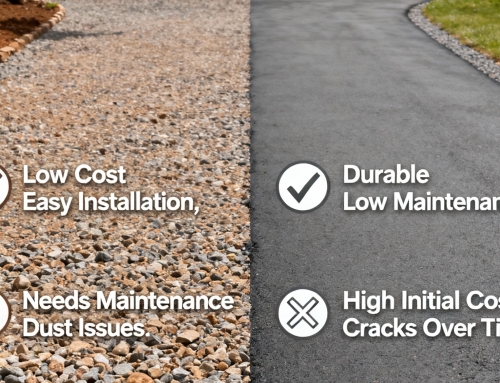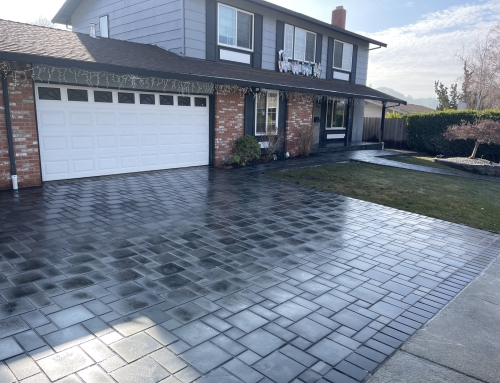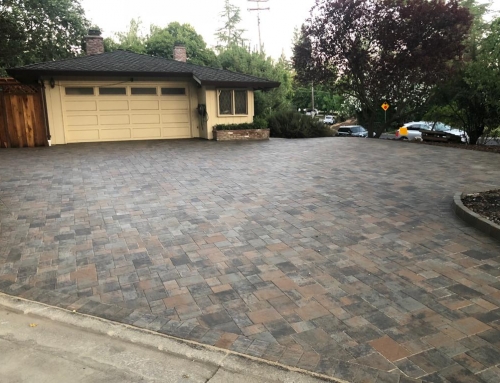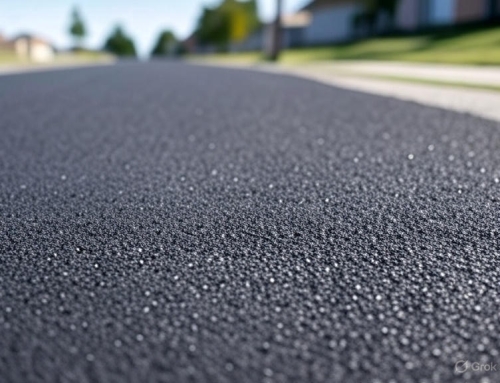Smartscaping is all about creating outdoor spaces that are beautiful, functional, and sustainable. One of the most versatile elements in achieving this is the use of patio pavers. These durable, stylish, and customizable materials can transform a backyard, walkway, or patio into a stunning and practical outdoor living area. In this guide, we’ll dive into the essentials of patio pavers, covering what they are, their sizes, their lifespan, and how to calculate the number of pavers needed for your patio project. Whether you’re a DIY enthusiast or planning to hire a paving contractor, this article will equip you with the knowledge to make informed decisions for your smartscaping journey.
What is a Patio Paver?
A patio paver is a flat, typically rectangular or square, piece of material used to create durable surfaces for outdoor areas like patios, walkways, driveways, or pool decks. Patio pavers are made from a variety of materials, including concrete, natural stone, brick, or porcelain, each offering unique aesthetics and performance characteristics. They are designed to interlock or fit closely together, creating a stable, even surface that can withstand foot traffic, weather, and time.
Types of Patio Pavers
-
Concrete Pavers: Affordable and versatile, concrete pavers come in various shapes, colors, and textures. They are manufactured to mimic natural stone or brick, making them a budget-friendly yet attractive option.
-
Natural Stone Pavers: Materials like flagstone, bluestone, or granite provide a premium, organic look. These pavers are quarried from the earth, offering unique patterns and durability.
-
Brick Pavers: Made from clay, brick pavers offer a classic, timeless appearance. They’re ideal for traditional or rustic designs.
-
Porcelain Pavers: A newer option, porcelain pavers are highly durable, non-porous, and resistant to stains, making them perfect for modern, low-maintenance patios.
Each type of paver has its own benefits, allowing homeowners to choose based on style, budget, and environmental needs. For instance, permeable pavers, a subset of concrete or stone pavers, allow water to seep through, reducing runoff and supporting eco-friendly smartscaping.
Benefits of Patio Pavers
Patio pavers are a cornerstone of smartscaping because they combine functionality with aesthetic appeal. They’re easy to install, require minimal maintenance, and can be replaced individually if damaged. Their versatility allows for creative patterns, such as herringbone, basketweave, or running bond, adding personality to your outdoor space. Additionally, pavers are slip-resistant and can be sealed to enhance durability, making them ideal for high-traffic areas.
What Size Are Patio Pavers?
Patio pavers come in a wide range of sizes to accommodate different design preferences and project requirements. The size you choose depends on the scale of your patio, the desired aesthetic, and the installation pattern. Here’s a breakdown of common patio paver sizes:
Standard Paver Sizes
-
Small Pavers: Typically 4” x 8” (brick-sized) or 6” x 6”. These are ideal for intricate patterns or smaller patios, as they create a detailed, textured look.
-
Medium Pavers: Common sizes include 6” x 9” or 8” x 8”. These are versatile and work well for both small and large patios, balancing ease of installation with visual impact.
-
Large Pavers: Sizes like 12” x 12”, 18” x 18”, or even 24” x 24” are popular for modern, minimalist designs. Larger pavers create a sleek, open look and require fewer units, reducing installation time.
-
Custom Sizes: Some manufacturers offer custom-cut pavers or modular sets that combine multiple sizes for unique patterns.
Thickness Considerations
Paver thickness is just as important as length and width. Standard thicknesses range from 1” to 3.15” (2.5 cm to 8 cm):
-
1” to 1.5”: Suitable for pedestrian traffic, such as patios or walkways.
-
2” to 3.15”: Designed for heavier loads, like driveways or areas with occasional vehicle traffic.
When selecting paver sizes, consider the scale of your project. Smaller pavers add visual complexity but may increase installation time, while larger pavers simplify the process but may overwhelm smaller spaces. Consulting with a professional can help you choose the right size for your smartscaping vision.
How Long Do Patio Pavers Last?
One of the standout features of patio pavers is their longevity, making them a smart investment for any outdoor space. The lifespan of patio pavers depends on several factors, including material, installation quality, maintenance, and environmental conditions. Here’s a closer look at their durability:
Lifespan by Material
-
Concrete Pavers: With proper installation and maintenance, concrete pavers can last 25–50 years. They’re engineered to resist cracking and fading, though sealing every 2–3 years can extend their life.
-
Natural Stone Pavers: Stone pavers, like granite or bluestone, can last 50–100 years or more. Their natural durability makes them resistant to weathering, though they may require occasional cleaning to prevent staining.
-
Brick Pavers: Clay brick pavers typically last 25–50 years. They’re prone to fading over time but can be rejuvenated with cleaning or sealing.
-
Porcelain Pavers: These can last 20–50 years, thanks to their non-porous nature and resistance to UV rays, moisture, and chemicals.
Factors Affecting Longevity
-
Installation Quality: A properly prepared base (typically compacted gravel and sand) ensures stability and prevents shifting or sinking. Poor installation can reduce lifespan significantly.
-
Maintenance: Regular cleaning, sealing (for some materials), and addressing weeds or joint sand loss can keep pavers looking new.
-
Climate: Extreme weather, such as freeze-thaw cycles or heavy rainfall, can stress pavers. Choosing materials suited to your climate (e.g., permeable pavers for rainy areas) enhances durability.
-
Usage: High-traffic areas may experience more wear, but thicker pavers or durable materials can mitigate this.
By choosing high-quality materials and ensuring proper installation—whether DIY or through a skilled contractor—you can enjoy a patio that remains functional and attractive for decades.
How Do I Calculate Pavers for My Patio?
Calculating the number of pavers needed for your patio is a critical step in planning a successful smartscaping project. Accurate calculations prevent over- or under-ordering, saving time and money. Here’s a step-by-step guide to help you determine the right number of pavers:
Step 1: Measure Your Patio Area
-
Determine the Shape: Most patios are rectangular, circular, or irregular. For rectangular patios, measure the length and width in feet. For irregular shapes, break the area into smaller rectangles or use a surveyor’s tool for precision.
-
Calculate Square Footage: Multiply the length by the width (e.g., a 10’ x 12’ patio = 120 square feet). For circular patios, use the formula for the area of a circle: A = πr² (e.g., a 10’ diameter circle has a radius of 5’, so A ≈ 3.14 x 5² ≈ 78.5 square feet).
Step 2: Account for Waste and Cuts
Add 5–10% to your total square footage to account for cuts, breakage, or future replacements. For example, a 120-square-foot patio with a 10% buffer requires 120 x 1.10 = 132 square feet of pavers.
Step 3: Determine Paver Size and Coverage
-
Check the manufacturer’s specifications for the paver’s coverage rate, often listed as square feet per paver. For example:
-
A 4” x 8” paver (0.33’ x 0.67’) covers approximately 0.22 square feet (0.33 x 0.67).
-
A 12” x 12” paver (1’ x 1’) covers 1 square foot.
-
-
Divide the total square footage (including waste) by the coverage rate per paver. For a 132-square-foot patio using 4” x 8” pavers:
-
132 ÷ 0.22 ≈ 600 pavers.
-
Step 4: Consider Patterns and Edging
Complex patterns, like herringbone or circular designs, may require additional pavers due to cuts. Edging or border pavers, often a different size or style, should be calculated separately based on the perimeter of the patio (in linear feet).
Step 5: Verify with a Professional
If you’re unsure about measurements or patterns, consult a professional paving contractor. They can provide precise calculations and recommend materials suited to your design and budget.
Example Calculation
Let’s say you’re building a 15’ x 20’ rectangular patio (300 square feet) using 6” x 6” pavers (0.5’ x 0.5’ = 0.25 square feet per paver):
-
Add 10% for waste: 300 x 1.10 = 330 square feet.
-
Divide by paver coverage: 330 ÷ 0.25 = 1,320 pavers.
-
If adding a 60-linear-foot border with 4” x 8” pavers, calculate separately: 60 ÷ 0.67 (length of one paver) ≈ 90 border pavers.
Smartscaping Tips for Patio Paver Projects
-
Choose Sustainable Materials: Opt for permeable pavers to reduce runoff and support eco-friendly drainage.
-
Plan for Drainage: Ensure your patio slopes slightly (1–2%) to prevent water pooling.
-
Mix and Match: Combine different paver sizes or materials for a custom look, but ensure compatibility in thickness.
-
Regular Maintenance: Sweep pavers regularly, reapply joint sand as needed, and seal every few years to maintain appearance and durability.
-
Hire a Professional for Complex Projects: For intricate designs or large patios, a skilled contractor can ensure a flawless installation.
Conclusion
Patio pavers are a cornerstone of smartscaping, offering endless possibilities for creating durable, attractive, and sustainable outdoor spaces. By understanding what patio pavers are, their sizes, their impressive lifespan, and how to calculate the right quantity for your project, you’re well-equipped to bring your vision to life. Whether you’re laying a simple walkway or designing an elaborate patio, patio pavers provide the flexibility and resilience needed for a lasting outdoor transformation. With careful planning and, if needed, the expertise of a paving contractor, your smartscaping project will enhance your home’s value and enjoyment for years to come.


